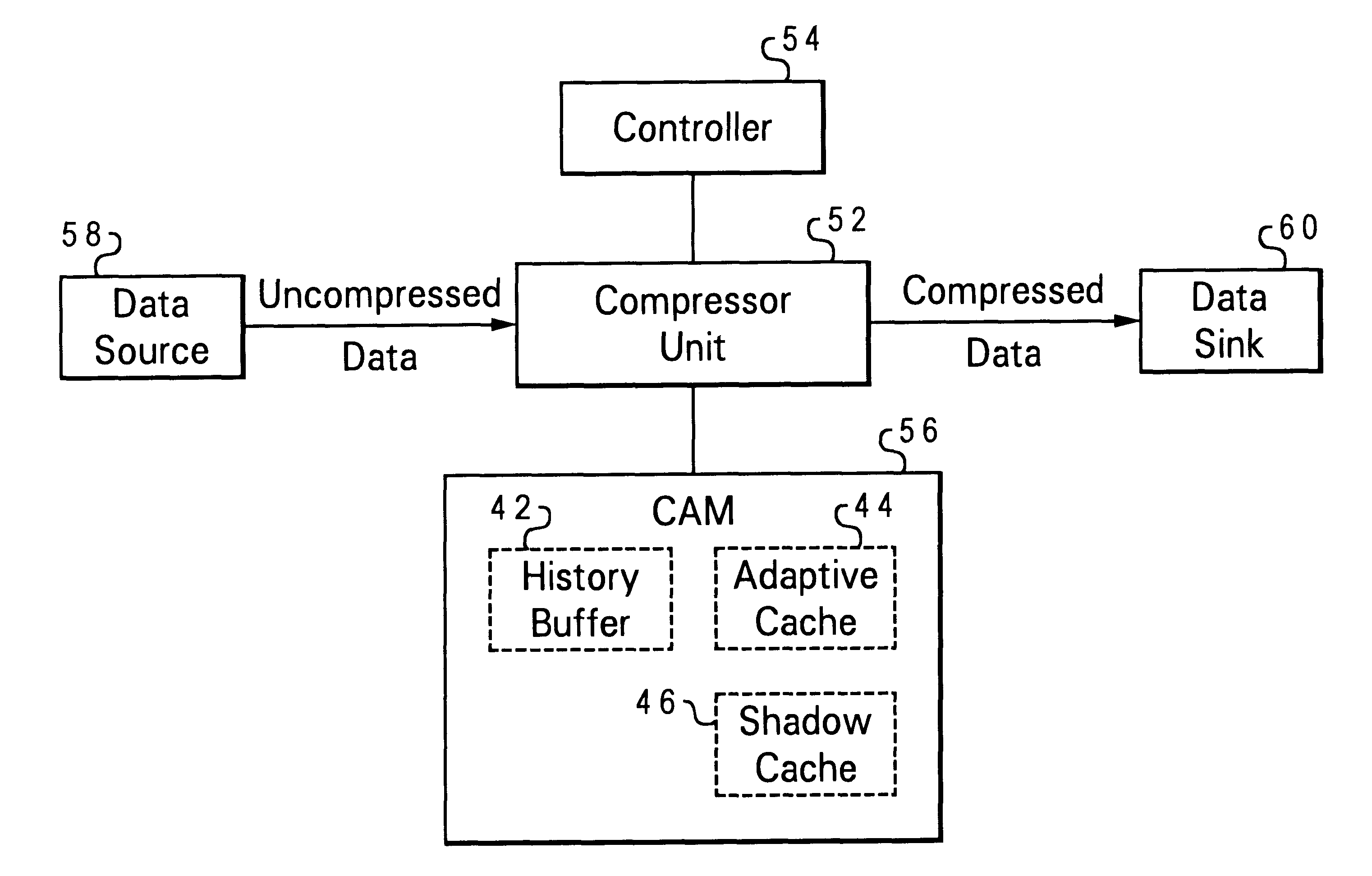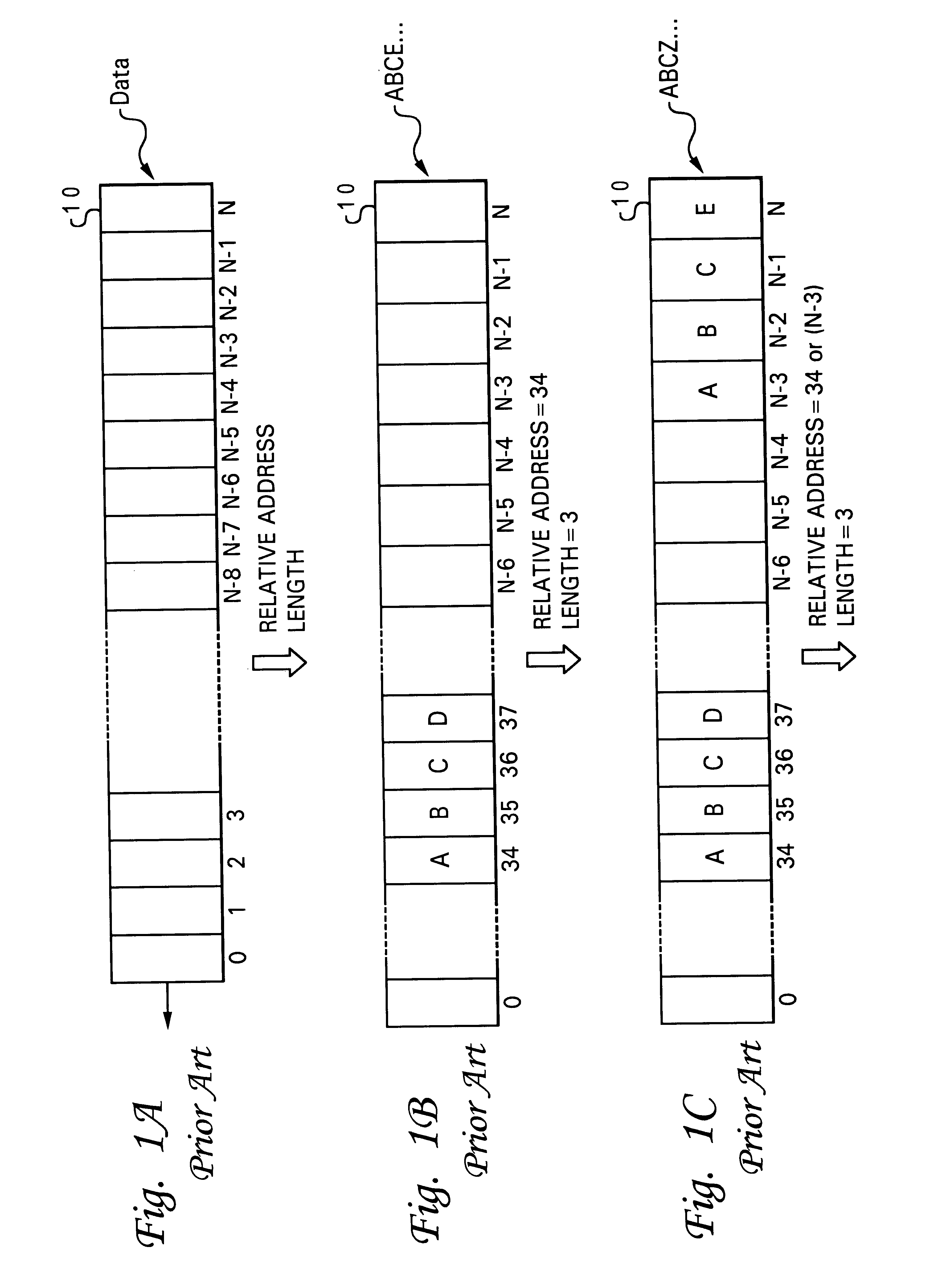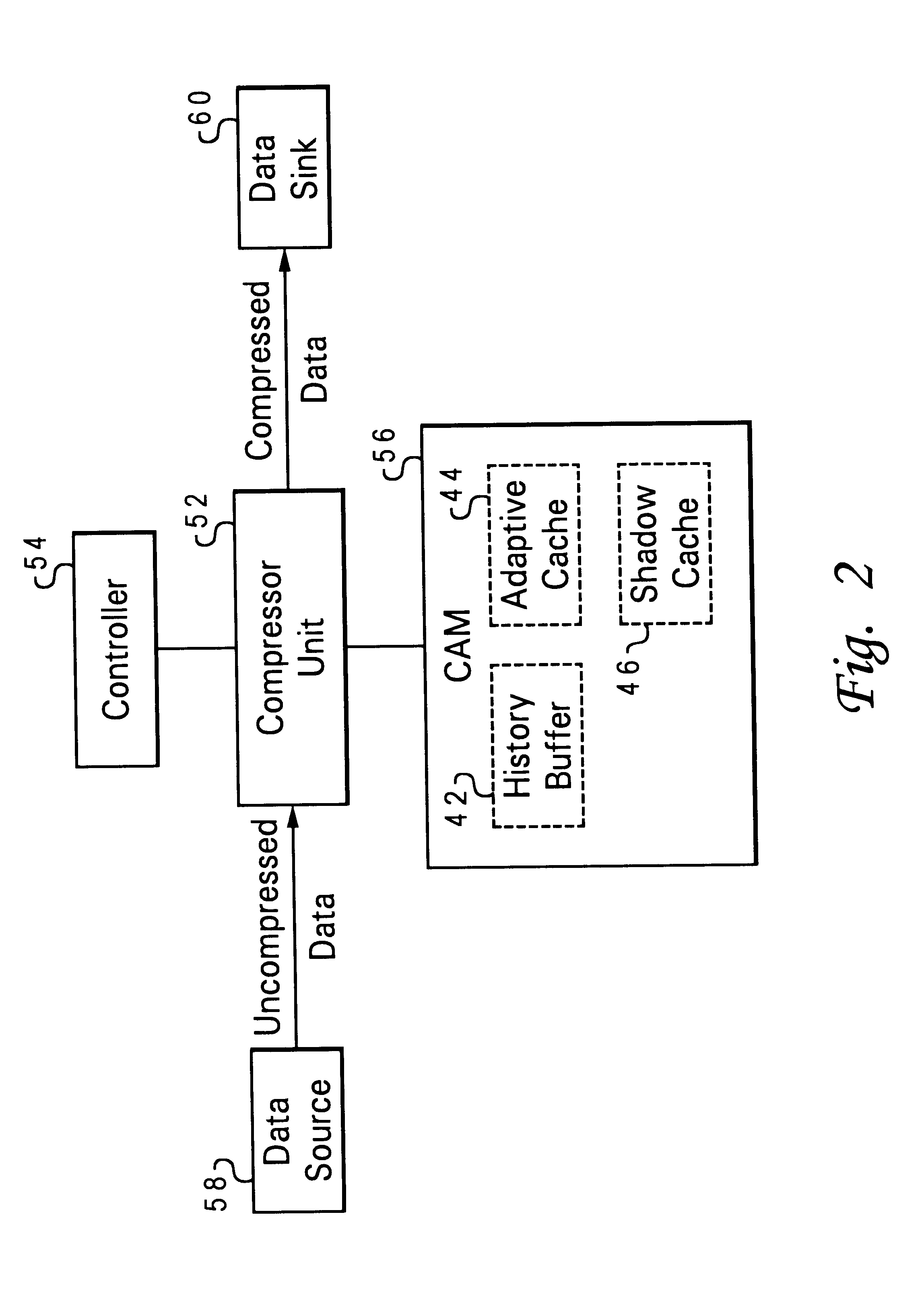Method and system for improving lossless compression efficiency
a lossless compression and efficiency technology, applied in the field of computer-aided data compression, can solve the problems of limiting factors such as the size of the history buffer relative to the amount of data to be compressed, and the introduction of additional system complexity required for handling the data storage requirements
- Summary
- Abstract
- Description
- Claims
- Application Information
AI Technical Summary
Problems solved by technology
Method used
Image
Examples
Embodiment Construction
This invention is described in a preferred embodiment in the following description with reference to the figures. While this invention is described in terms of the best mode for achieving this invention's objectives, it will be appreciated by those skilled in the art that variations may be accomplished in view of these teachings without deviating from the spirit or scope of the present invention.
The basic Lempel-Ziv algorithm, which is described in "Compression of Individual Sequences via variable Rate Coding" by Lempel and Ziv in IEEE Transactions on Information Theory, September, 1977, pages 530-536, has served as a basis for effective data compression. Adaptive Lossless Data Compression (ALDC) is an IBM Corporation proprietary data compression technique implemented within a family of compression products that employs a derivative of Lempel-Ziv encoding to compress data. The ALDC algorithm processes a sequence of bytes by maintaining a recent history of the bytes processed and poi...
PUM
 Login to View More
Login to View More Abstract
Description
Claims
Application Information
 Login to View More
Login to View More - R&D
- Intellectual Property
- Life Sciences
- Materials
- Tech Scout
- Unparalleled Data Quality
- Higher Quality Content
- 60% Fewer Hallucinations
Browse by: Latest US Patents, China's latest patents, Technical Efficacy Thesaurus, Application Domain, Technology Topic, Popular Technical Reports.
© 2025 PatSnap. All rights reserved.Legal|Privacy policy|Modern Slavery Act Transparency Statement|Sitemap|About US| Contact US: help@patsnap.com



